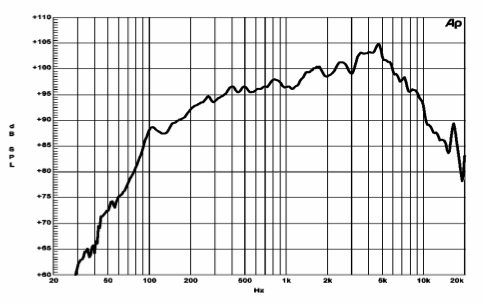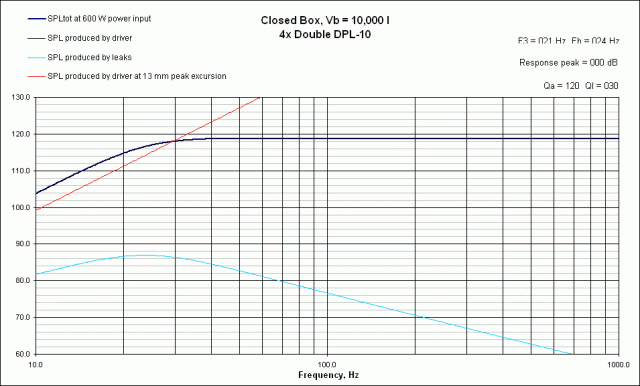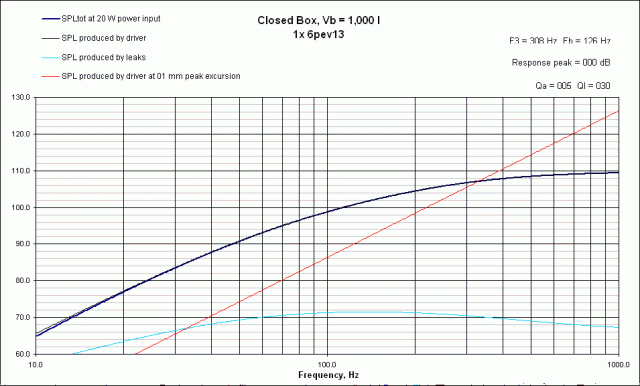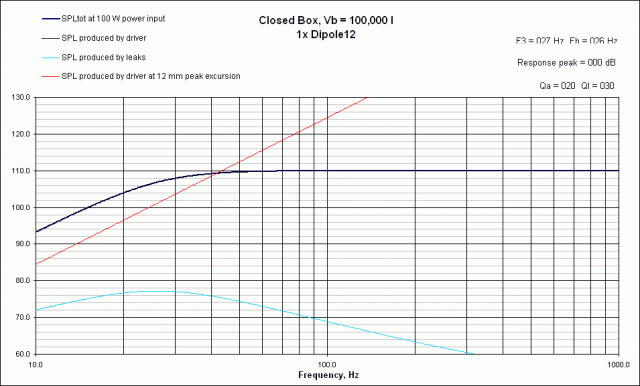
This project is aiming to build a dipole with more sensitivity and higher output than the Francesca prototype. Again, this is going to be a learning exercise and not the final product!
Starting with the tweeter – upgrade to the regular (non-PDR) Neo3. This has about 3 dB more sensitivity, and a narrower dispersion pattern, which is actually what we want for a dipole. Also, I’ve read some comments online that it sounds better (in “naked” dipole configuration) than the Neo3PDR. So, worth a try then. Since the crossover to the tweeter is now at 5 kHz, I’m also thinking about trying a small compression driver for very high sensitivity – more musings on that idea later.
Next the mid. At Bathurst I moved the crossover between the woofers up to 400 Hz. I think I’m going to move it up a bit higher, like maybe 500 or 600. Anyway it’s a DSP crossover so it’s dead easy to try a few. I think I’ll use the B&C 6PEV13 for this. It has only 0.6 mm of Xmax, which sounds low, but look at the output with 20 Watts input power:
The red line is Xmax, which we don’t reach until around 340 Hz. And the driver is giving over 108 dB output from 400 Hz up – and more than that higher up because of the driver’s rising frequency response. So at least 11-12 dB more than the CHR-70 then.
Note that when put into in an open baffle, this is not the actual frequency response that will be obtained. But it’s useful for comparison purposes, just to see where the driver limitations are. While there are other similar drivers with higher Xmax, they have funky (not round) frames that will be hard to recess. Also, they are a bit less efficient, and the higher efficiency of the 6PEV13 means I can use lower-powered amps. Finally, it looks like I don’t really need the extra Xmax for the planned application.
Looking at this driver’s frequency response, this is the kind of driver that until recently I avoided like the plague. My passive crossover design skills and equipment are way short of what’s needed to deal with something like this. But now, with the miniDSP, it should be easy. (We will see!) The driver looks to be easily usable up to 5 kHz.

Now, the woofer. I have a couple of options here, but first up is the Lambda Acoustics Dipole12. (The link is to Acoustic Elegance, who makes these drivers now. Mine were made by Lambda Acoustics, I don’t know if they’re really truly the same, but the specs look similar from memory.) This thing goes up to a few kHz, making a crossover at 500 or 600 Hz a doddle. With 90 dB/W/m efficiency, that’s several dB above the pairs of DPL10’s. Although admittedly they won’t take the same power; here they are with 100W into the driver:
Again, the response in an open baffle will look nothing like this. This is just to get an understanding of what the driver limits are. We can see that at this power level, Xmax is reached at around 42 Hz. This suggests to me that, after all is said and done, the power to the woofer might be rolled of gently below 40 Hz.
And that brings me to the subwoofers. There are two options to try – sealed and dipole. I’d prefer to end up using dipole, as I use the sealed subs in the HT and don’t really feel like building more subs (bo-oring!). To get more output, I’m going to try an array of 4 dipole subs, each with two DPL-10 drivers. So, twice the output of the current prototype. Furthermore, by distributing the subs, it should be possible to smooth out the in-room response and thus reduce the amount of eq needed.
Without taking dipole loss into account, modeling four pairs of these drivers – i.e. a total of 8 drivers – with a total of 600W of power gives:
 With dipole loss (which will be considerable), we won’t get anything like that amount of output. However, we can see that with this power the drivers will reach Xmax at 30 Hz. Not shown in this plot is that excursion is around 20mm at 20 Hz, which is probably about where the driver’s Xmech is. So in terms of power and excursion limits, this all seems to work out fine. (The reason I chose to use 600W of power is because I have an amp that will delivers 2x300W into 8 ohms, which is what these drivers connect up as.)
With dipole loss (which will be considerable), we won’t get anything like that amount of output. However, we can see that with this power the drivers will reach Xmax at 30 Hz. Not shown in this plot is that excursion is around 20mm at 20 Hz, which is probably about where the driver’s Xmech is. So in terms of power and excursion limits, this all seems to work out fine. (The reason I chose to use 600W of power is because I have an amp that will delivers 2x300W into 8 ohms, which is what these drivers connect up as.)


1 Comment